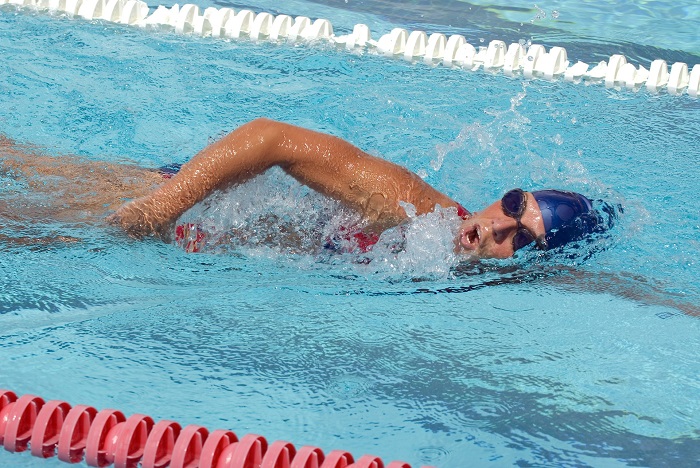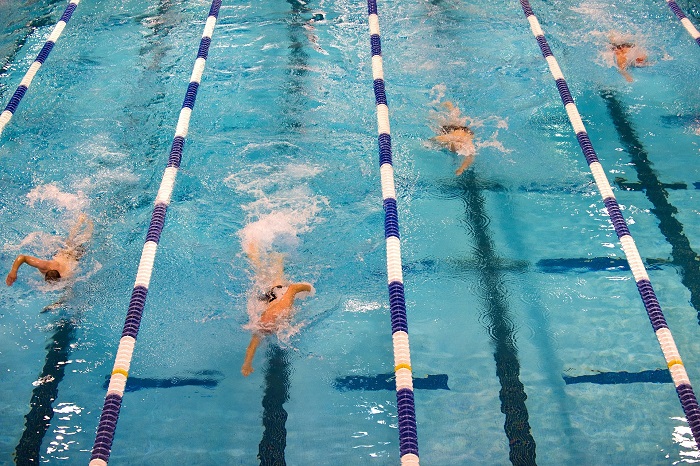How to avoid the Swimmer’s Shoulder in order to enjoy the time in the pool
Swimming enjoys the reputation of a relatively low-impact sport that provides significant benefits to both the physical and the mental health. Due to its many advantages, it is one of the most popular sports activities in the United States, with over a million competitive and recreational swimmers. Because of the fact that swimming combines both the body’s strength and its flexibility, it is an ideal, all-encompassing fitness activity. However, due to the repetitive overhead motion of the swimming strokes, both the professional and the recreational swimmers are at an extremely high risk of developing overuse injuries, as well as other injuries caused by poor swimming technique and body posture. Numerous studies and analysis have estimated that swimmers perform one million strokes per arm, per year. Considering the fact that the movements performed by the shoulder during swimming are quite demanding, it does not come as a surprise that over 90% of swimmers visit an orthopedic doctor because of mild or severe shoulder problems.Swimmer’s Shoulder: The major reason why swimmers stay out of the pool
Although swimming is considered a low-impact sport, it still comes with its own set of injuries. The Swimmer’s Shoulder is an umbrella term used to cover a wide range of shoulder injuries and conditions that swimmers experience over the course of their swimming careers. As an energetic activity, swimming demands a wide range of motions of the shoulder joint. All of those challenging movements have the potential to seriously injure the shoulder, and cause irritation or damage to the tissues.Symptoms of Swimmer’s Shoulder
Swimmer’s Shoulder is typically manifested through a mild or severe pain caused by inflammation of the tissues in the shoulder joint. Commonly, the main pain area is set at the back of the shoulder and expands deep in the muscles, but it can also be located at the front of the shoulder. Other common symptoms of Swimmer’s Shoulder include limited joint mobility, decreased neuromuscular control, weak muscle performance and, in more severe cases, a change/modification in the anatomy of the shoulder. In general, Swimmer’s Shoulder is associated with Rotator Cuff Impingement, Biceps Tendonitis, Bursitis, or shoulder instability. Because of that, the symptoms that are typically linked to these common shoulder conditions apply to Swimmer’s Shoulder as well.What is the cause of Swimmer’s Shoulder?
Swimmers put an immense pressure on their shoulders while performing various swimming strokes, especially the freestyle or front crawl stroke. The backstroke and the butterfly stroke also contribute to the development of Swimmer’s Shoulder, though to a lesser degree.
How to treat and prevent the Swimmer’s Shoulder?
Prevention of Swimmer’s Shoulder is key, but if the condition happens to occur, thorough education on how to address it properly and lower the risk of more severe injuries is the first step that needs to be taken. The next step is to identify the root cause of the Swimmer’s Shoulder injury in the specific case and, then, develop a suitable treatment. A positive aspect in the treatment of Swimmer’s Shoulder is the fact that the therapy options are simple, manual, and there is almost no down-time in performing the day-to-day activities. One of the most effective treatments for Swimmer’s Shoulder is the ice regimen, which addresses the inflammation and the swelling that are typical for this condition. In more severe cases, anti-inflammatory medicine may also be prescribed to ease down the pain and swelling. During the course of the treatment, it is highly recommended to stay out of the pool in order to avoid any possible complications and additional shoulder injuries. The swimming enthusiasts who can’t go without their daily swimming routine should modify the strokes, use a softer swimming technique, or use paddles, since they are an enormous aid in preventing further injuries. Although Swimmer’s Shoulder can be treated easily, it is always better to prevent it from occurring in the first place. Prevention begins by taking the time to work on the body posture, master the swimming strokes, and develop a proper swimming technique. It is crucial to pay attention to every detail because proper swimming technique places significantly less stress on the shoulder, and prevents pain and inflammation.
- Swimming under the control and guidance of a professional who can be of great assistance in perfecting the body posture and technique
- Adjusting the speed, the agility, and the power program of swimming according to the body’s strength
- Performing less repetitive strokes that cause overuse injuries
- Practicing a steady progress and carefully increasing the strokes’ intensity
- Never omitting the warm-up and cool-down part of the swimming practice
- Adding core strengthening exercises to the daily workout routine
- Adding periods of rest to give the shoulder enough time to recover its strength
- Avoid swimming when the muscles are tired or in pain






























